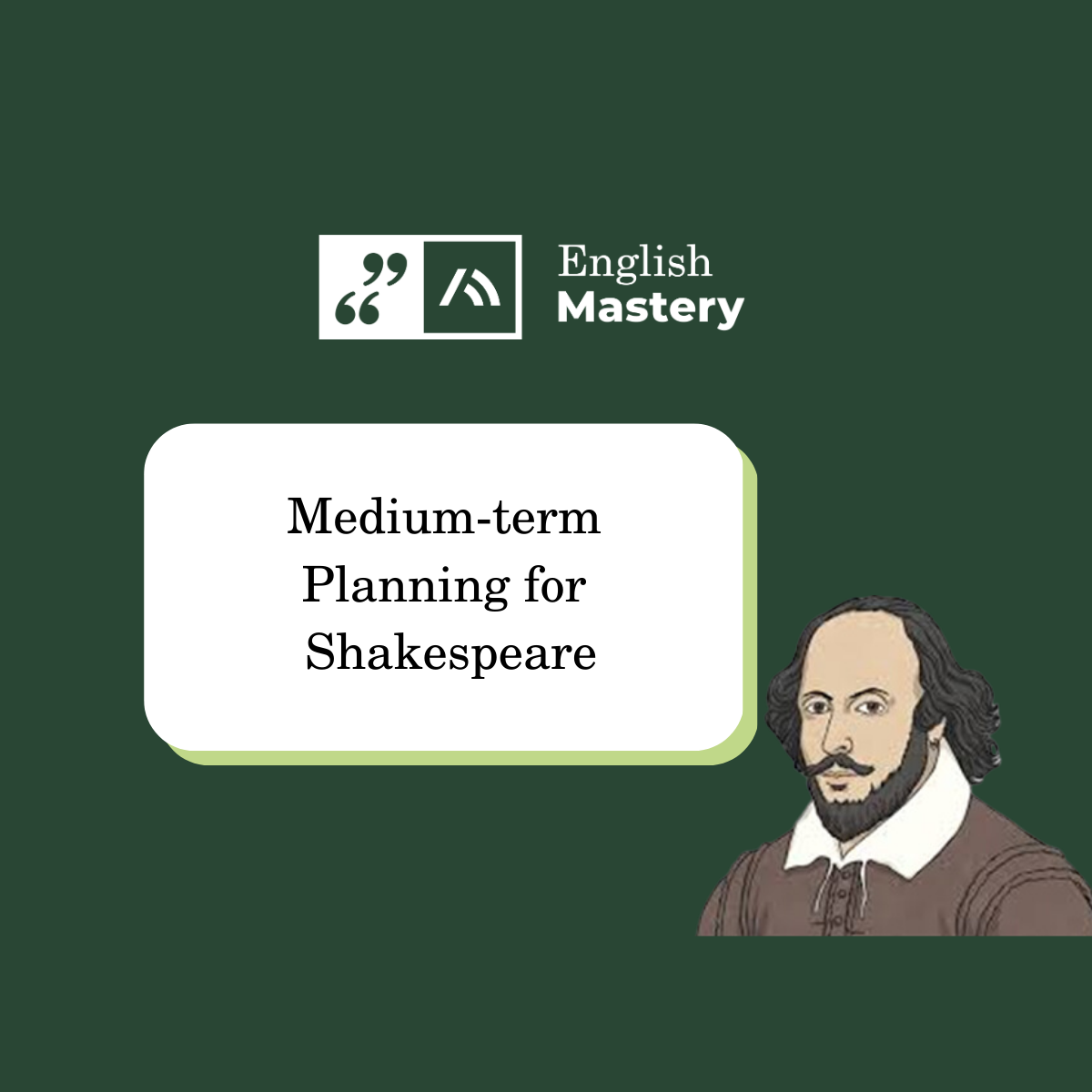
In our recent ‘Shaking Up Shakespeare’ webinar, we looked at some activities that work really well in the classroom when teaching Shakespeare.
One thing we didn’t cover was how we do medium-term planning for Shakespeare – i.e. how to set an endpoint for a unit and draw out the key knowledge and skills we intend students to learn throughout the term. Here’s a brief insight into the process we undertook when developing our unit on The Tempest.
Whenever we design a unit of work, whether it’s on a literary text or a piece of creative writing, we always begin by thinking about the final assessment. This isn’t because we want to focus on testing and measuring students, or to spend a unit of work relentlessly drilling them for the test. Instead, this acts as a really powerful way of planning backwards. By considering where we want students to end up, we can then think carefully about all the knowledge that students will need to cover to allow them to write confidently on the text.
But agreeing on the assessment task isn’t even the first step. Before then, we have to learn about the play ourselves to identify which characters, themes and parts of the text would make a suitable assessment task. So, we went off the library to re-read and swot up on The Tempest. We cast our net pretty wide here, but some highlights include the Cambridge School Shakespeare, Norton, and new RSC school editions of the play, the British Library’s excellent articles, the RSC’s education materials, and The New Cambridge Companion to Shakespeare, which always offers accessible, undergrad-level insights into the plays.
At this stage, some ideas for assessment tasks, and foci for the unit of work, were beginning to brew. In the end, we wanted students to explore Caliban in great depth. He offers a great chance to discuss race, oppression, and Britain’s rampant colonialism in the Elizabethan era, and beyond.
A study of Caliban also presented a great opportunity to develop the work students had previously looked at when studying The Adventures of Sherlock Holmes. There, in ‘The Red-Headed League’, students had learnt of Holmes’s ‘dual nature’.
Students, of course, are able to discuss a topic from multiple angles much earlier in their school careers, and Caliban certainly isn’t presented in a ‘binary’ manner. But there were two distinctive sides of Caliban that we thought helped to frame Caliban: he is a violent abuser who shows no remorse following his attempt to assault Miranda, but is also the victim of colonialism, proud of his native land, and bears the scars of Prospero’s relentless torments.
With the assessment task determined, our next step was to have a go at writing our own answers to the question. As intimidating as this is, it’s really one of the most important. Here, the most important scenes, quotations, context and events become crystal clear, especially when you find similar passages in your colleagues’ writing.
The mutual scenes, quotations and context essentially become the bedrock of our units, and form a key part of the knowledge we want to prioritise in the units.
As you can see, this is an intensive and often time-consuming process, but we’ve found there really aren’t any shortcuts when it comes to really getting under the skin of a text, and planning for how to introduce it into your school’s English curriculum.
English Mastery helps schools to do some of this heavy lifting, which is why 80% of teachers claimed that we helped to reduce their workload in a recent report published by the Education Endowment Foundation. If you would like to support your colleagues’ workload, find out more about joining English Mastery, our subject improvement programme.